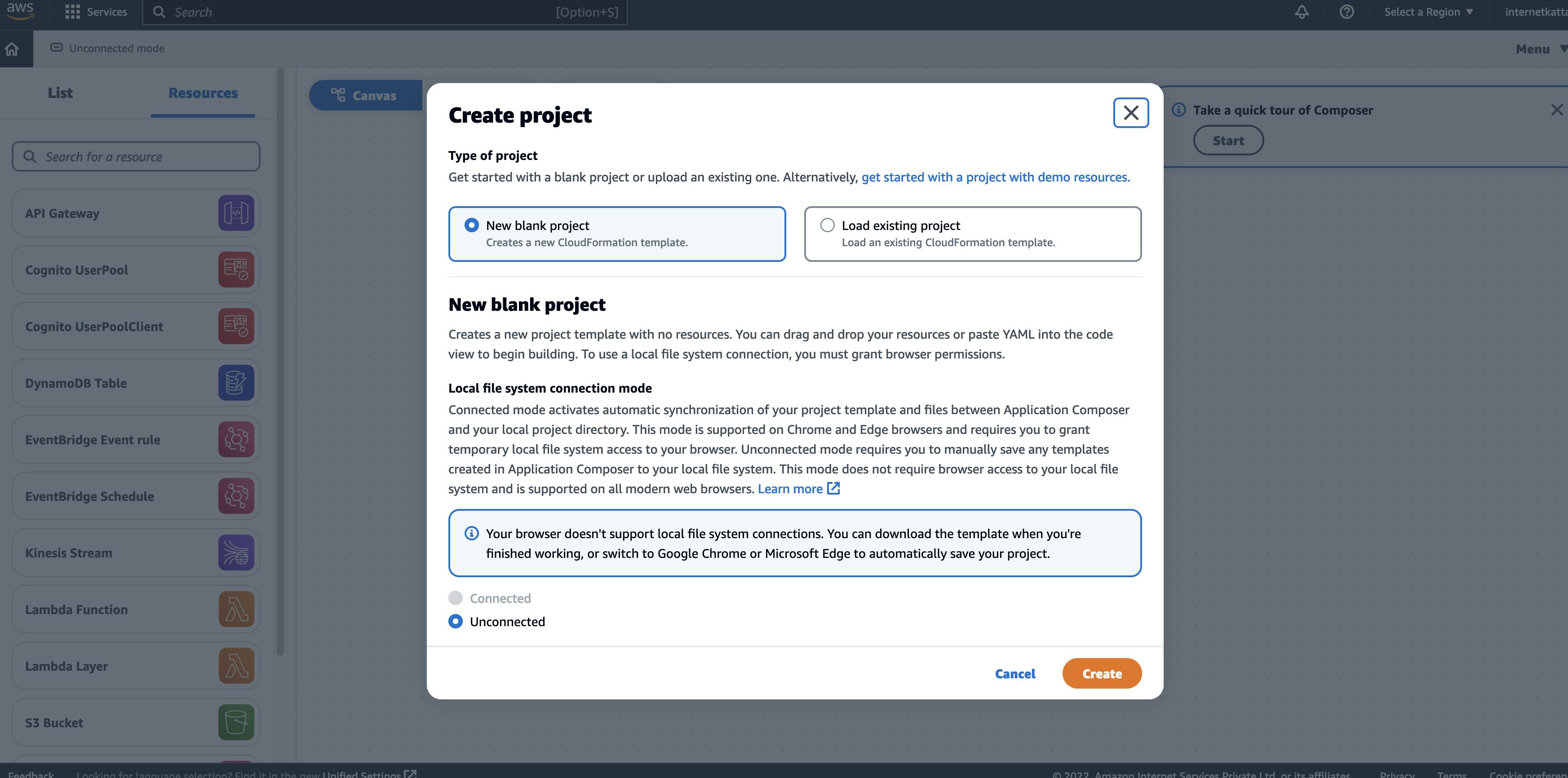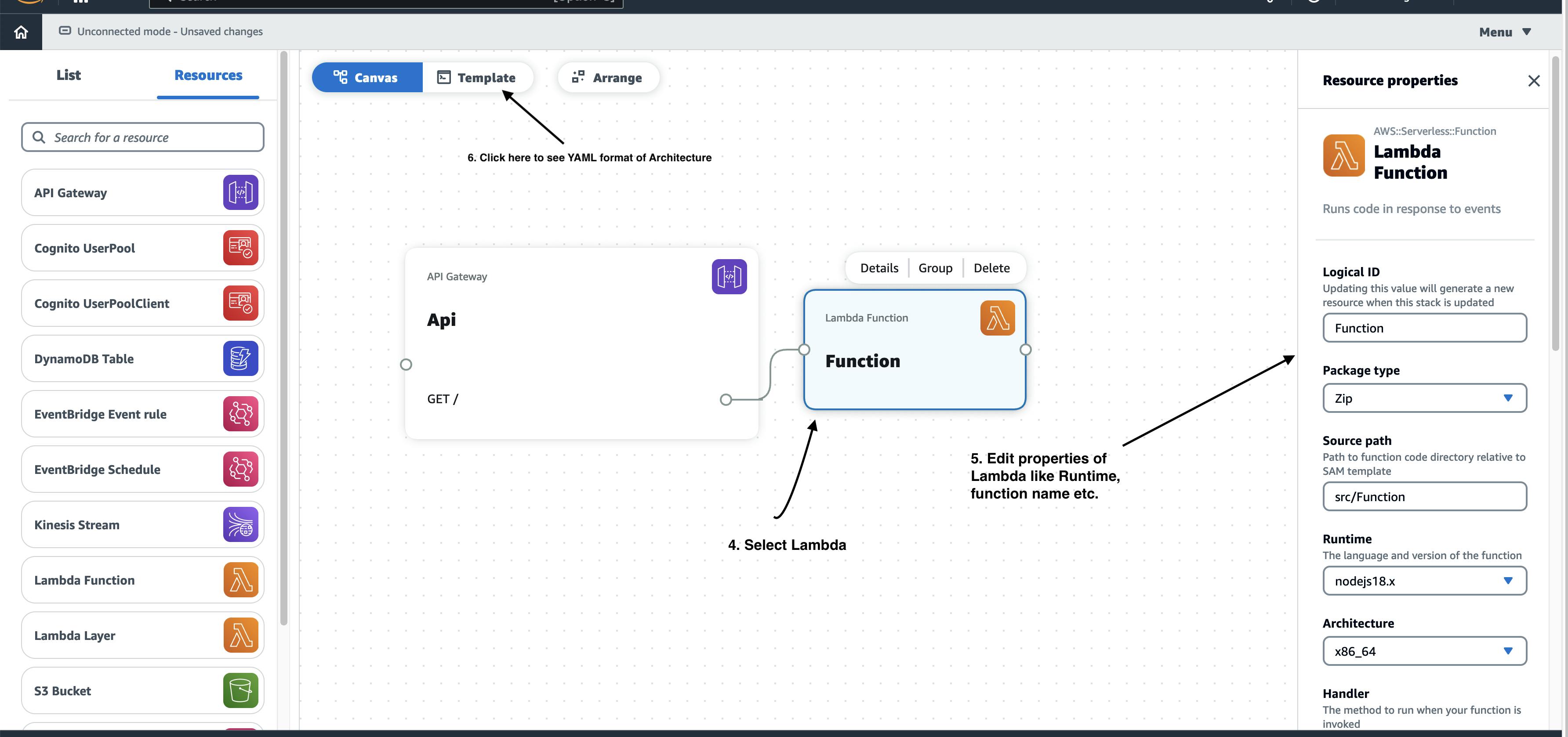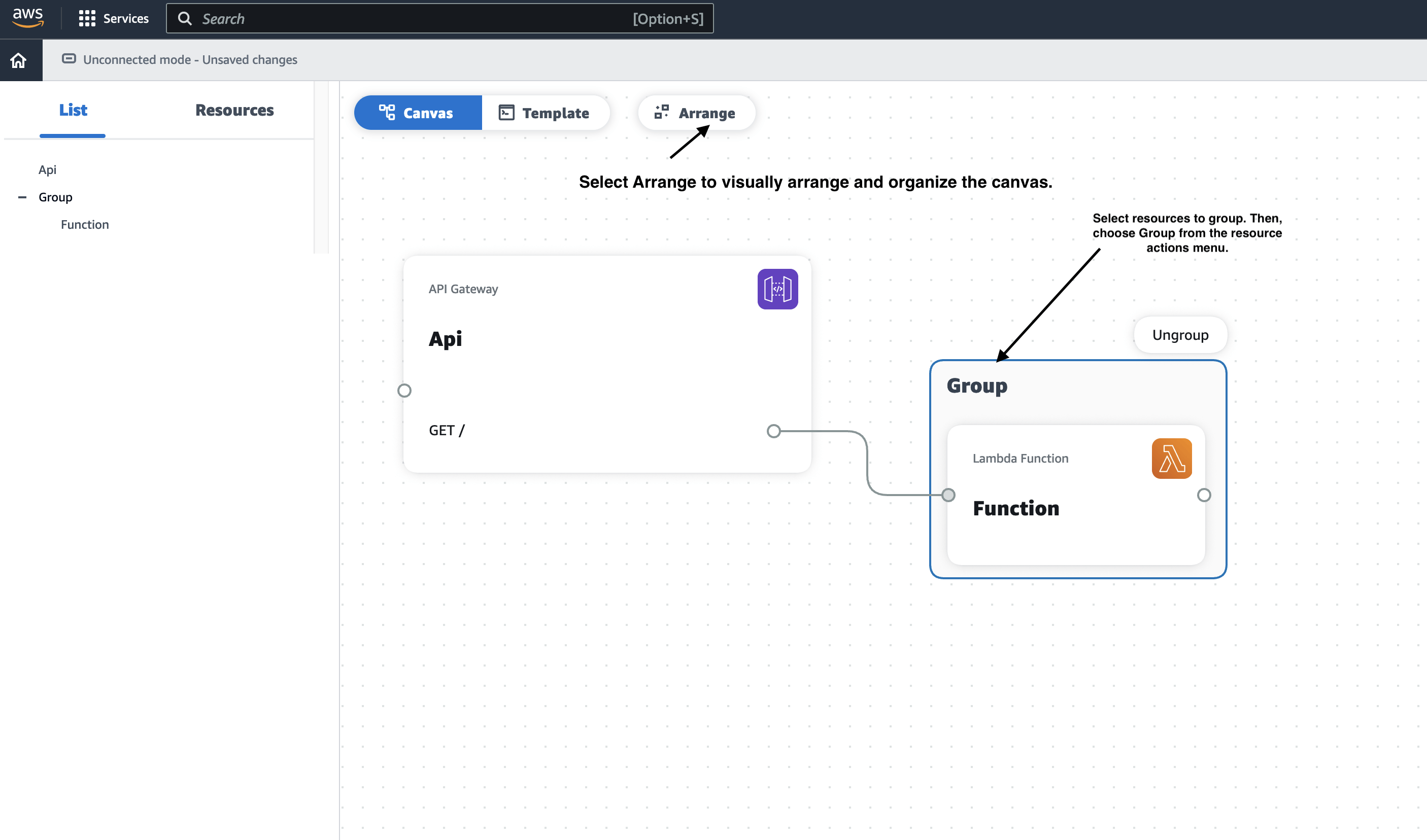Overview of AWS Application Composer
In this blog explain basic overview about AWS Application Composer and how this can help.
Hello Devs,
I am going to give an overview of AWS Application Composer which was got announced in AWS re: Invent 2022. They are a couple of services launched at this event. You might think I am writing about this service only. Let me tell you a story.
I am one of them who is waiting for this kind of service for a long time. I have been interviewing with the AWS product team for giving this feedback when I shared what challenges faced while creating interlink of service using CloudFormation or AWS Console UI. How is this difficult for people who haven't much aware of this CloudFormation process etc? Why can't this work like drag and drop service the way plug and play model works? There should be something that can work which can enable us to visualise architecture and make it work.

And the wait is over...
Here is AWS's announced service called
AWS Application composer

The picture is used from AWS Official site.
What is AWS Application Composer?
AWS Application Composer helps us to create and accelerate the architecture, configuration and building of serverless applications using just a simple drag-and-drop workflow. It also empowers us to deploy the necessary configuration to our application.
What is the way to do this?
Can use the demo project to start
Can use a blank template to use
if you have any CloudFormation ready can import and see a visualisation
Let's check out how this works

Lets start :
- Open AWS Console -> AWS Application Composer -> Click on "New blank project"

Will use a simple use case to create an API gateway which is to get items.
Click the left sidebar and select the relevant service which choose to create. In our case will select the API gateway
Then add properties value to the right sidebar like API gateway Logical ID, path, Allow origin value etc.


- This way can link two services to each other and click on the Template tab to see the CloudFormation YAML file.

Transform: AWS::Serverless-2016-10-31
Resources:
Api:
Type: AWS::Serverless::Api
Properties:
Name: !Sub
- ${ResourceName} From Stack ${AWS::StackName}
- ResourceName: Api
StageName: Prod
DefinitionBody:
openapi: '3.0'
info: {}
paths:
/:
get:
x-amazon-apigateway-integration:
httpMethod: POST
type: aws_proxy
uri: !Sub arn:${AWS::Partition}:apigateway:${AWS::Region}:lambda:path/2015-03-31/functions/${Function.Arn}/invocations
responses: {}
EndpointConfiguration: REGIONAL
TracingEnabled: true
Function:
Type: AWS::Serverless::Function
Properties:
Description: !Sub
- Stack ${AWS::StackName} Function ${ResourceName}
- ResourceName: Function
CodeUri: src/Function
Handler: index.handler
Runtime: nodejs18.x
MemorySize: 3008
Timeout: 30
Tracing: Active
Events:
ApiGET:
Type: Api
Properties:
Path: /
Method: GET
RestApiId: !Ref Api
FunctionLogGroup:
Type: AWS::Logs::LogGroup
DeletionPolicy: Retain
Properties:
LogGroupName: !Sub /aws/lambda/${Function}
There are some more features available like :
Arrange services
Group services
Zoom in and Zoom out

This is a very basic use case to create the Architecture of any application. I hope this blog helps you to learn. Feel free to reach out to me on my Twitter handle @AvinashDalvi_ or comment on the blog. I will write more on this service as it this very close to my heart. Stay tuned!

